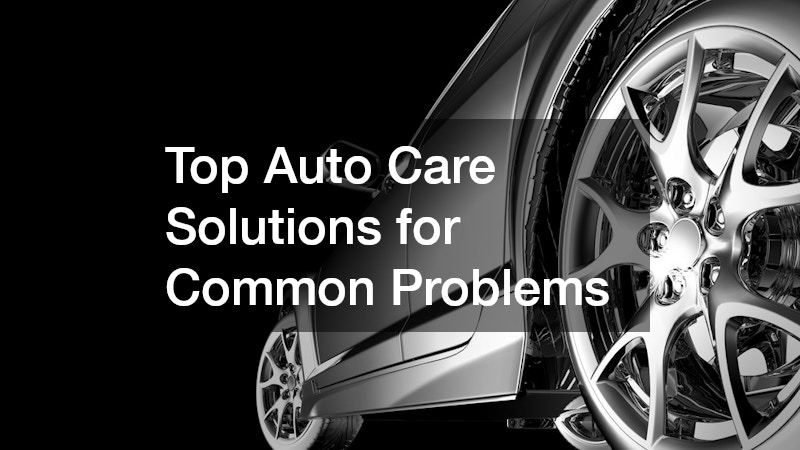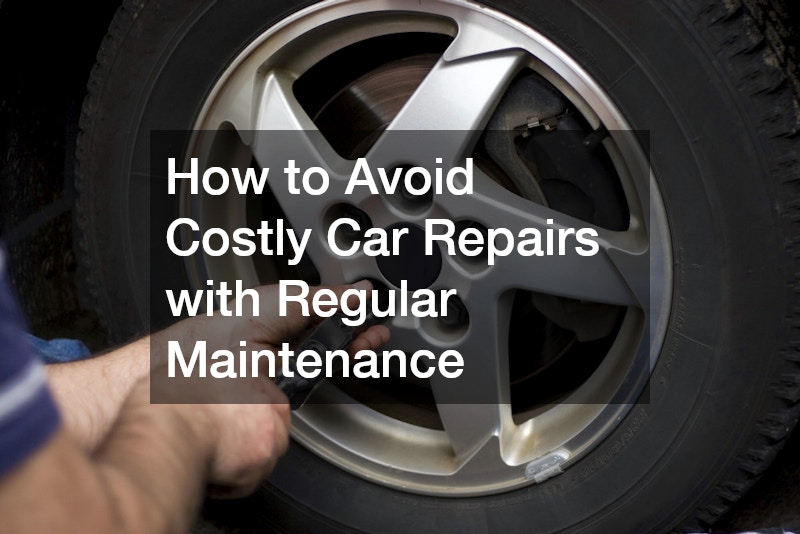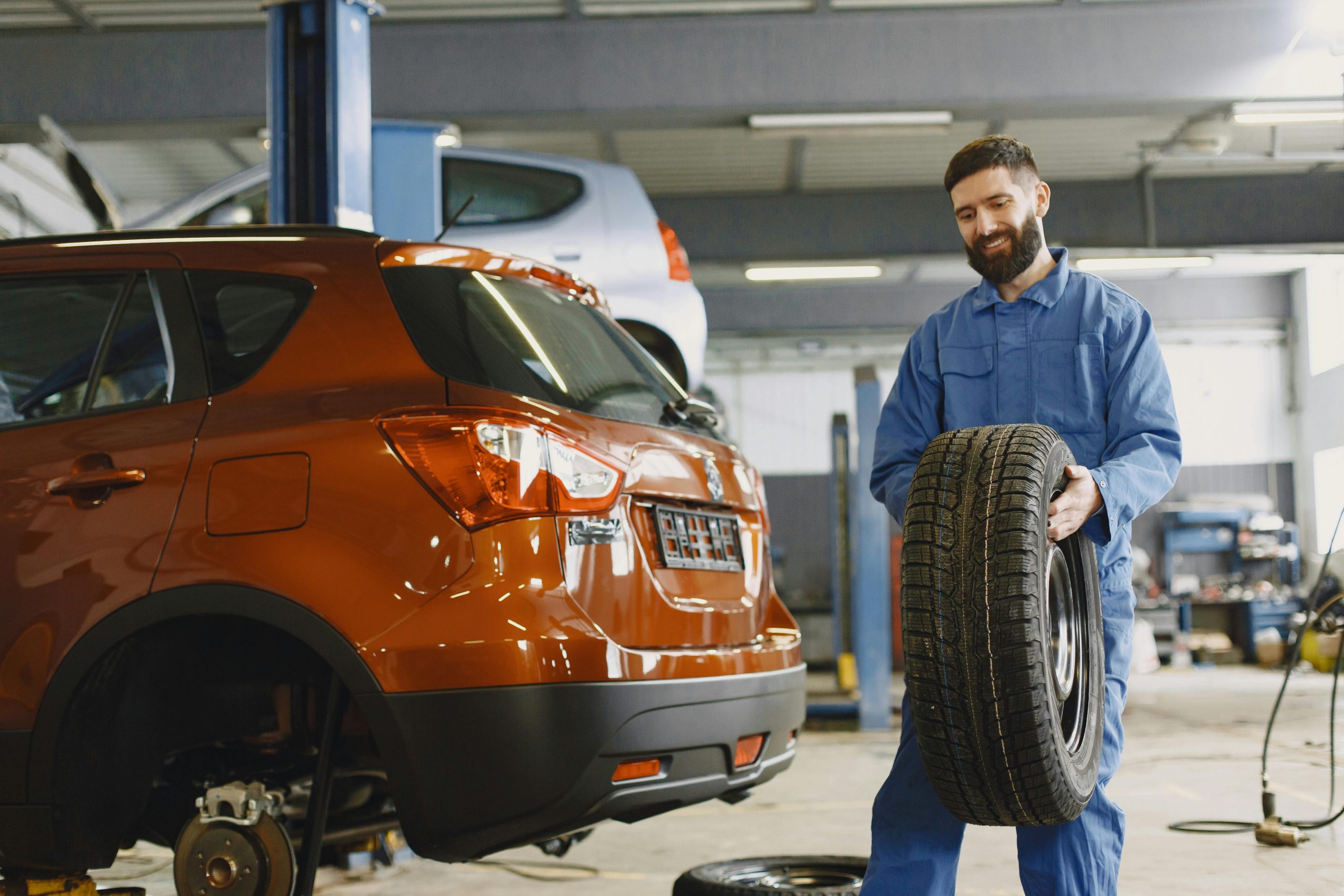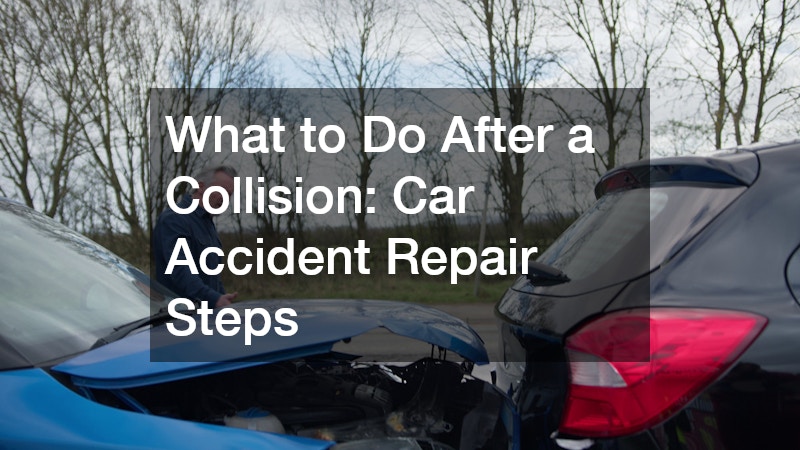Keeping your car in peak condition isn’t just about pride of ownership—it’s about safety, savings, and reliability. In this guide, we’ll explore top auto care solutions for some of the most common vehicle problems car owners face. From maintaining your battery to ensuring seasonal care, this article provides practical advice and tips, plus insight into related auto repairs like auto collision repair, car wrap services, and even how towing companies can help in a pinch. Whether you need local auto collision repairs, are considering panel upgrades, or looking for a hand wash car station, these solutions will keep your ride looking and running great.
Let’s dive in!
1. How Do I Maintain My Car’s Battery Health?

One of the most common reasons vehicles fail to start is a dead battery. Regular care can prevent this problem and save you time, money, and frustration in the long run.
1.1 Checking Battery Terminals
Periodically inspect your battery terminals for corrosion, loose wires, or buildup of dirt. Clean them with a mixture of baking soda and water, using a brush to scrub away corrosion, and tighten any loose connections. Applying a little petroleum jelly afterward can help prevent future buildup.
1.2 Regularly Testing Battery Voltage
Use a multimeter or visit your mechanic to test the battery’s voltage and overall health. Healthy batteries should read around 12.6 volts when the car is off and about 14 volts when running. Testing regularly can help you catch a weak battery before it fails.
1.3 Tips for Preventing Battery Drain
Turn off lights and unplug chargers or accessories when not in use to avoid draining the battery unnecessarily. If you won’t be driving for more than a week, consider a trickle charger or disconnect the battery to keep it from discharging completely.
1.4 Cold Weather Battery Care
Cold weather can significantly reduce battery performance, making it harder to start your car. Park in a garage or sheltered area when possible and ensure your battery is fully charged and in good condition before winter. Some drivers even opt for battery warmers in extremely cold climates.
1.5 Signs of a Dying Battery
Look for slow engine cranking, dim headlights, a dashboard warning light, or frequent need for jump-starts. Address these signs quickly to avoid being stranded—something towing companies often deal with. If in doubt, have a professional test the battery under load.
2. What Are the Solutions for Poor Fuel Efficiency?
When your car starts guzzling gas, these car repair services can help you save money at the pump and reduce your environmental impact.
2.1 Regular Maintenance Checks
A well-maintained car runs more efficiently. Regular tune-ups and oil changes help your engine perform at its best, while replacing worn belts, hoses, and filters also improves fuel economy. Don’t skip your scheduled maintenance.
2.2 Fuel System Cleaning
Over time, fuel injectors can clog with deposits, reducing engine performance. Have your fuel system professionally cleaned every 30,000 to 50,000 miles to restore efficiency. Using quality fuel with detergent additives can also help keep injectors clean.
2.3 Proper Tire Inflation
Underinflated tires create more rolling resistance, which means your engine has to work harder. Check your tire pressure at least once a month, especially during seasonal temperature changes, and keep them properly inflated to the manufacturer’s specs.
2.4 Efficient Driving Practices
Avoid aggressive starts, stops, and excessive idling. Smooth acceleration, maintaining steady speeds, and coasting to stops when safe can improve your mileage. Use cruise control on highways when possible for consistent fuel usage.
2.5 Choosing the Right Fuel
Use the fuel grade recommended in your owner’s manual. Higher octane fuel doesn’t necessarily improve performance unless your car specifically requires it. Filling up with the right fuel saves money and prevents unnecessary engine wear.
3. How Do I Keep My Car’s Engine Running Smoothly?
Your engine is the heart of your car. Taking care of it ensures reliability, better performance, and longevity.
3.1 Regular Oil Changes
Oil lubricates, cools, and cleans engine components, preventing excessive wear and overheating. Change it as recommended in your owner’s manual, and consider using synthetic oil for better performance and longer intervals if suitable.
3.2 Checking Engine Coolant Levels
Low coolant can lead to overheating and expensive repairs. Check levels in the overflow reservoir at least once a month, and always use the type of coolant specified by the manufacturer. Inspect hoses for leaks or cracks, too.
3.3 Timely Replacement of Spark Plugs
Worn spark plugs can cause misfires, rough idling, and poor fuel economy. Replace them at intervals specified by your car’s manufacturer, and inspect ignition coils and wires at the same time to ensure a reliable spark.
3.4 Cleaning the Air Filter
A clogged air filter restricts airflow to the engine, reducing performance and efficiency. Check it during every oil change and replace or clean it if it’s dirty. A clean air filter improves both power and mileage.
3.5 Using Engine Additives
Some fuel or oil additives can help clean deposits, reduce friction, and improve combustion efficiency. Consult your mechanic to see if any are beneficial for your specific car and driving habits, and always follow product directions carefully.
4. What Are the Ways To Prevent Tire Wear?
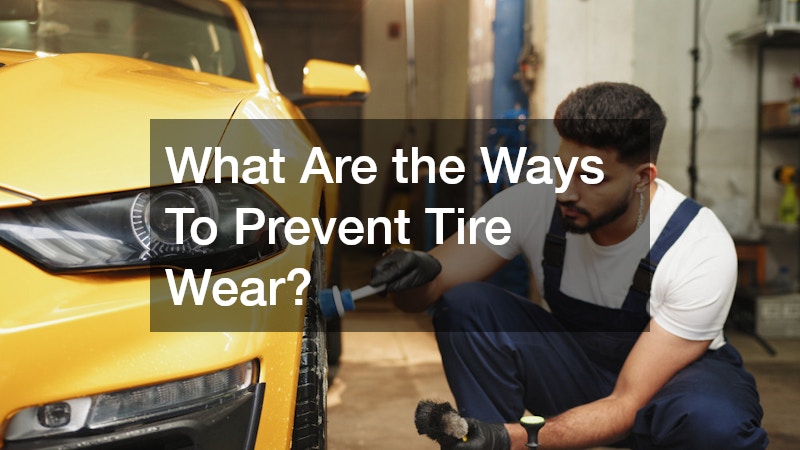
Tires are a major investment, so extend their life with these tips.
4.1 Rotating Tires Regularly
Rotate every 5,000–7,000 miles to ensure even wear.
4.2 Checking Tire Pressure
Keep tires inflated to the manufacturer’s recommended PSI.
4.3 Wheel Alignment and Balancing
Misaligned wheels can cause uneven wear. Have alignment checked at least once a year.
4.4 Avoiding Overloading
Don’t exceed your vehicle’s weight limit. Overloading can damage tires and suspension.
4.5 Inspecting Tire Tread
Check the depth of your tire tread. If it’s below 2/32 of an inch, it’s time for a replacement.
5. How Do I Deal With My Car’s Braking Issues?
Brakes are crucial for safety. These auto care solutions can help prevent accidents.
5.1 Identifying Brake Noise
Squealing, grinding, or clicking noises indicate a need for inspection.
5.2 Regular Brake Pad Inspections
Check brake pads for wear every 10,000 miles or as recommended.
5.3 Flushing Brake Fluid
Old fluid can lead to brake failure. Have it flushed every 2–3 years.
5.4 Troubleshooting ABS Light
If your ABS light comes on, have your system checked immediately.
5.5 Maintaining Brake Rotors
Warped or worn rotors can affect braking. Resurface or replace them as needed.
6. What Should I Do if My Car Overheats?
An overheating engine can cause severe damage. Act fast!
6.1 Immediate Actions
Pull over safely, turn off the engine, and let it cool. Don’t open the radiator cap while hot.
6.2 Checking the Radiator
Inspect for leaks, cracks, or blockages. Ensure the radiator cap seals properly.
6.3 Inspecting the Thermostat
A stuck thermostat can prevent coolant flow. Have it tested if overheating persists.
6.4 Cooling Fan Maintenance
Ensure the cooling fan operates correctly, especially in stop-and-go traffic.
6.5 Regular Engine Coolant Check
Check coolant levels frequently and top up with the correct mixture.
7. How Do I Repair Small Scratches and Dents?

Even minor cosmetic damage can hurt your car’s resale value and diminish its overall appearance, making it essential to address scratches and dents promptly.
7.1 Using Scratch Removers
Specialized scratch removers can effectively buff out minor surface scratches, restoring a smooth finish. For best results, apply using a microfiber cloth in a circular motion and follow up with a protective wax coating.
7.2 Paint Touch-up Kits
For deeper scratches that expose the metal or primer, use a paint touch-up kit matched to your car’s exact color code. Be patient and apply thin layers, allowing each to dry thoroughly before adding the next for a seamless blend.
7.3 Dent Repair Tools
Small dents can often be removed at home with suction tools or heat-and-cool techniques. These methods work best on shallow dents without creases. If needed, finish with light sanding and polishing to restore the surface.
7.4 Polishing Techniques
After completing repairs, polish the area to restore shine and blend the repair with the surrounding paintwork. Use a quality automotive polish and apply gentle, even pressure for a professional look.
7.5 When to Seek Professional Help
For major scratches and dents, or if home remedies fail, trust professionals who specialize in local auto collision repair. They have the right tools and expertise to restore your car’s finish perfectly.
8. How To Improve Visibility During Night Driving?
Clear visibility is key to safe driving, and small improvements can make a big difference in your ability to see and be seen.
8.1 Cleaning Headlights
Cloudy headlights reduce illumination and can compromise safety. Clean them thoroughly with a restoration kit, removing haze and oxidation. Finish with a UV sealant to maintain clarity longer.
8.2 Replacing Bulbs Regularly
Replace headlight and taillight bulbs before they burn out to maintain optimal visibility. Choose high-quality bulbs and consider upgrading to brighter, longer-lasting options if available.
8.3 Adjusting Headlight Alignment
Misaligned headlights can blind oncoming drivers or leave parts of the road unlit. Have a mechanic adjust them to the proper angle and ensure both sides are even for maximum coverage.
8.4 Using Anti-Reflective Films
These films can reduce glare from oncoming traffic and improve your vision in dark or rainy conditions. They are inexpensive, easy to apply, and increase driving comfort at night.
8.5 Keeping Windshield Clean
Dirt, streaks, and fog on your windshield can scatter light and cause glare. Keep your windshield clean inside and out, and use anti-fog treatments if necessary for added safety.
9. What Are the Best Practices for Interior Maintenance?
Your car’s interior also deserves regular care to maintain comfort, appearance, and value.
9.1 Regular Vacuuming
Dirt and debris can wear down carpets and seats over time. Vacuum weekly, including hard-to-reach areas under seats and between cushions, to keep the interior fresh and prevent damage.
9.2 Protecting Upholstery
Use seat covers or apply upholstery protectants to prevent stains, cracking, and fading. Leather conditioners help keep leather supple, while fabric protectors resist spills and dirt.
9.3 Dashboard and Console Care
Wipe surfaces with a microfiber cloth and use a UV protectant to prevent fading, cracking, and drying out. Avoid harsh cleaners that may discolor or damage surfaces.
9.4 Odor Elimination
Use odor eliminators, air fresheners, or keep baking soda under the seats to absorb smells. Regularly air out the car and clean air vents to keep the interior smelling fresh.
9.5 Cleaning Car Mats
Wash or replace mats regularly to keep them looking new. Rubber mats are easier to clean and better for wet weather, while carpeted mats add a touch of luxury.
10. How To Ensure Car’s Longevity Through Seasonal Care?

Adapting your maintenance routine to the season can greatly extend your car’s life and protect it from the elements.
10.1 Preparing for Winter
Check antifreeze levels, battery health, and switch to winter tires for better grip. Keep a winter emergency kit in the car, and wash frequently to remove salt that can damage paint and undercarriage.
10.2 Summer Care Tips
Inspect cooling systems to prevent overheating and avoid parking in direct sunlight whenever possible. Use sunshades to protect the interior, and wax the exterior to shield against UV rays.
10.3 Rainy Season Maintenance
Ensure wipers are functional, tires have adequate tread depth, and brakes are responsive for wet conditions. Keep windows treated with water-repellent products to improve visibility in heavy rain.
10.4 Dealing with Humidity
Prevent mold and mildew by keeping your interior dry. Use moisture absorbers and avoid leaving wet items inside the car. Check for leaks that can let water seep in during humid weather.
10.5 Protective Car Covers
Use covers to protect paint and interior from UV rays, rain, and debris. Choose a breathable, waterproof cover that fits your car snugly to prevent scratches and allow ventilation.
Beyond Basics: Additional Auto Care Solutions
In addition to the tips above, consider these services to keep your car in top shape:
- Car wrap services – Protect your paint and add personality with a custom wrap.
- Panel upgrades – Refresh your car’s appearance or replace damaged sections.
- Hand wash car station – Regular gentle washing preserves paint better than automated car washes.
- Auto loans – If repairs are extensive or you’re upgrading, flexible auto loans can help finance it.
- Volvo car repair – Owners of specific brands, like Volvo, should seek mechanics experienced in car repair for best results.
Conclusion
Addressing common car issues with the right auto care solutions not only extends the life of your vehicle but also enhances safety and enjoyment. From maintaining your battery to tackling seasonal challenges, consistent maintenance pays off. Don’t hesitate to utilize specialized services like local auto collision repairs, auto collision repair, or even towing companies when necessary. For added flair and protection, consider car wrap services, panel upgrades, or treat yourself to a clean finish at a hand wash car station.
And if it’s time for bigger investments, explore auto loans to cover major repairs or upgrades. Whether it’s routine upkeep, a quick fix, or specialized care like Volvo car repair, these auto care solutions will keep you—and your car—on the road with confidence.
Remember: a little attention today prevents big headaches tomorrow. Safe driving!

